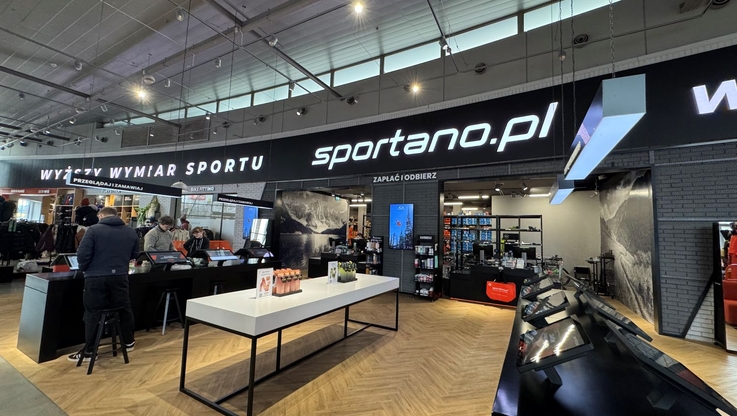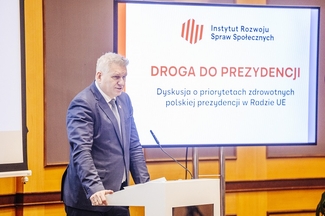Pobierz materiał i Publikuj za darmo
Central and Eastern Europe (CEE) is an academic term used to describe a group of regions covering a vast area of the continent. In the research of ESPON, an international programme supporting the spatial development of Europe, CEE consists of 81 areas comprising Austria, Croatia, the Czech Republic, Poland, Slovakia, Slovenia and Hungary, as well as selected regions of Germany and Italy.
“This area represents about 25% of the total territory of the Union and is inhabited by approximately 1/3 of the Community’s population (148 million inhabitants in 2019). Most of the countries in the region underwent a successful economic transformation in the 1990s and today offer high-quality products at competitive prices on the global market. Central Europe is the economic core of the EU, generating 30% of the Union's GDP,” as stated in a document prepared by ESPON analysts.
Central European countries have entered the next decade with better prospects for economic development than other countries on the continent. However, experts emphasise that there are clear structural differences in the CEE region between urban and industrialised regions, forming local “growth poles”, and rural and peripheral areas, with lower competitiveness and constantly shrinking populations.
Seven cities with more than one million inhabitants are located in Central Europe, including Prague, Milan, Munich, Budapest, Warsaw, Vienna, and Berlin. These are primarily the cities that attract investors and modern technologies. Approx. 33 percent of the CEE population lives in larger cities, 37 percent in intermediate regions, and 30 percent in rural areas.
Thirty years after the fall of the Iron Curtain, economic disparities in Central Europe are still evident, despite the sharp growth in the once centrally planned economies. In the 10 most developed regions of CEE (Bavaria, northern Italy, Austria) the average GDP per capita (in purchasing power parity) exceeds by about nine times the average in the 10 least developed regions, located mainly in the eastern parts of Poland, Slovakia or Hungary. Similar differences can be observed between the largest cities and smaller centres and rural areas.
Therefore, is it possible to ensure economic growth for the whole of Central Europe and avoid benefits for only the largest metropolises, where the standard of living is already similar to that in rich Western European agglomerations? ESPON experts suggest three projects, the sensible use of which would provide development opportunities for impoverished regions of the CEE, many of which are located in Poland.
Firstly, funds from the Fair Transformation Fund, created to implement the principles of the European Green Deal may stimulate the development not only of individual regions but of entire provinces in our country in the coming years.
“Investments in the energy sector are essential for the economic development of the whole of Central Europe. Due to geographical conditions, this region of the continent stands a chance of becoming a major producer of green energy and a one-of-a-kind technological hub,” ESPON experts argue.
Secondly, the strategic location of our part of the continent must be exploited. It is the central transportation hub at the heart of Europe. Seven of the nine corridors of the TEN-T Core Network Corridors run through the CEE area, connecting the Baltic Sea and the Mediterranean Sea, and the hinterland with its eastern, outer border.
Nonetheless, a number of regions, particularly rural and peripheral ones, including border regions, are still poorly connected to the main transport corridors and nodes. Smart transport solutions are therefore essential to complete missing links and remove bottlenecks to ensure adequate accessibility across Central Europe. To illustrate this, ESPON analysts mention investments in a modern railway network (as the most environmentally friendly mode of transport), the creation of interregional carrier partnerships and the revitalisation of inland waterway routes.
The digitalisation of rural areas, promoted by Slovenia, which belongs to Central Europe and currently holds the EU Presidency, is also expected to play an important role. It may contribute both to an improvement in the quality of life in local communities, better access to sources of knowledge, more effective promotion of specific areas as tourist attractions, as well as stimulate the development of new and innovative forms of business.
Effective steps in the three aforementioned areas, combined with increasingly close regional cooperation (the Visegrad Group, the Three Seas Initiative) and a proactive approach on the forum of the entire European Union, offers hope for a rate of development of Central Europe in the coming years on an unprecedented scale.
Source: PAP MediaRoom
Pobierz materiał i Publikuj za darmo
bezpośredni link do materiału
| Data publikacji | 31.08.2021, 12:00 |
| Źródło informacji | PAP MediaRoom |
| Zastrzeżenie | Za materiał opublikowany w serwisie PAP MediaRoom odpowiedzialność ponosi – z zastrzeżeniem postanowień art. 42 ust. 2 ustawy prawo prasowe – jego nadawca, wskazany każdorazowo jako „źródło informacji”. Informacje podpisane źródłem „PAP MediaRoom” są opracowywane przez dziennikarzy PAP we współpracy z firmami lub instytucjami – w ramach umów na obsługę medialną. Wszystkie materiały opublikowane w serwisie PAP MediaRoom mogą być bezpłatnie wykorzystywane przez media. |



